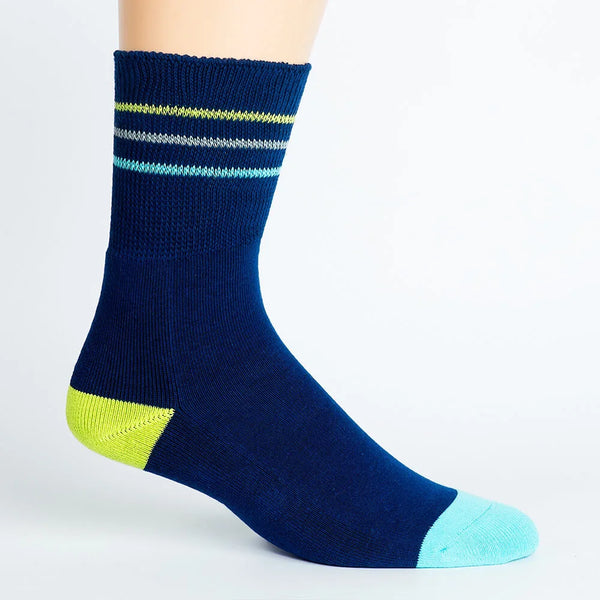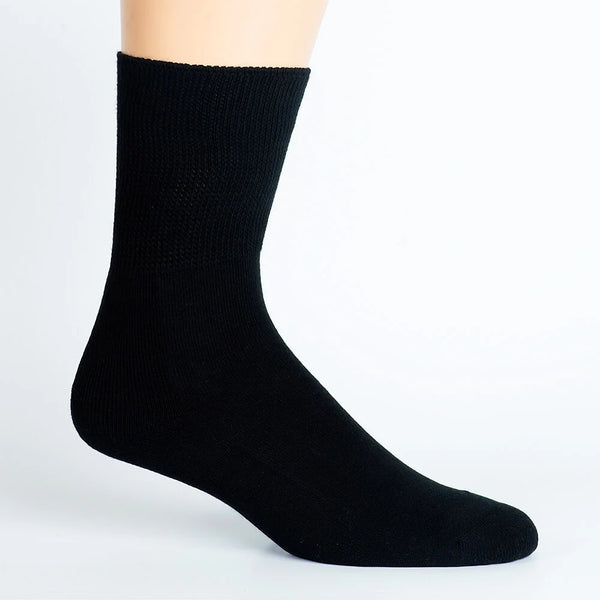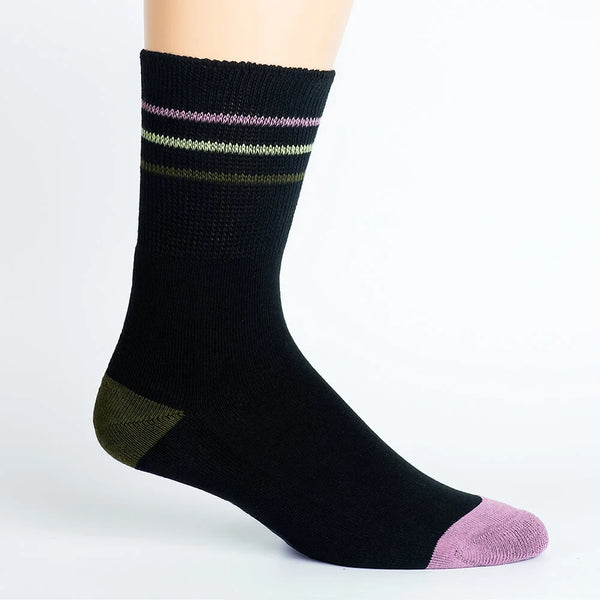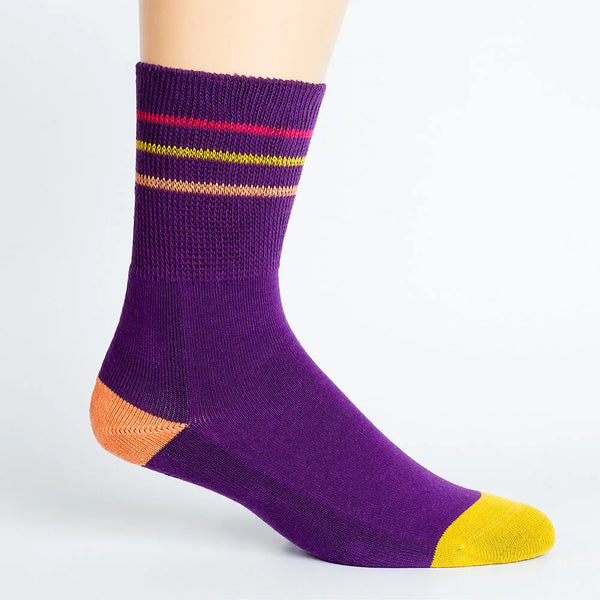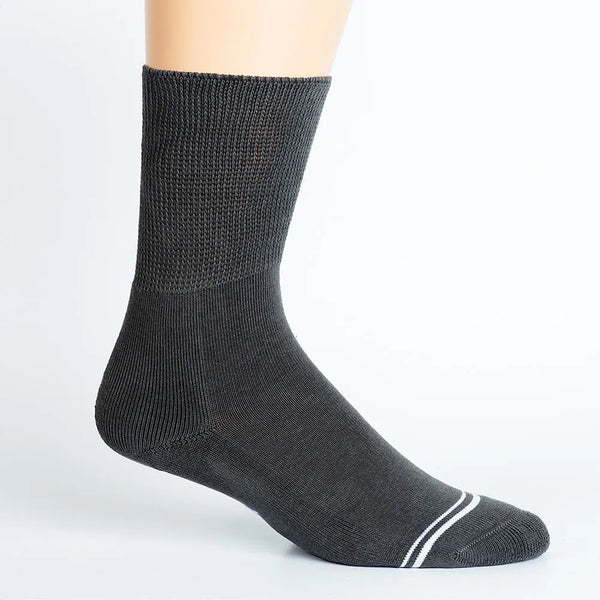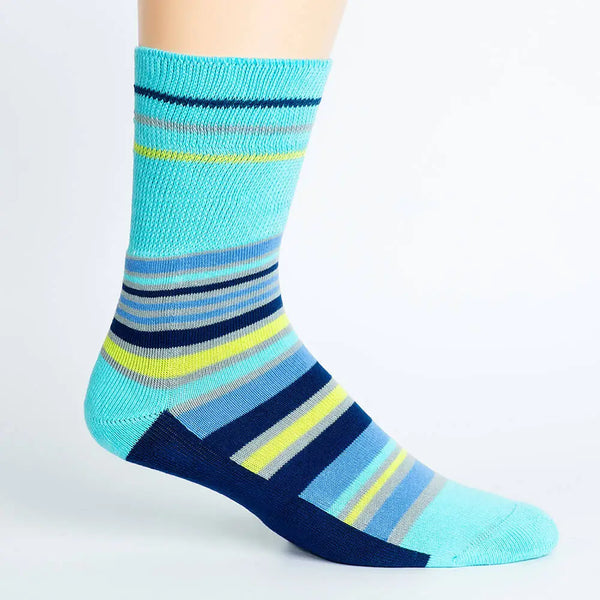The Science Behind Diabetic Socks: How They Help Keep Your Feet Healthy

For people living with diabetes, proper foot care is critical. Diabetes can cause poor circulation, nerve damage (known as diabetic neuropathy), and increase the risk of foot ulcers, swelling, and other complications. One of the simplest yet most effective tools for managing these risks is diabetic socks.
But what exactly makes these socks different, and how do they contribute to better foot health? Let’s explore the science behind diabetic socks and how they help keep your feet healthy.
What Are Diabetic Socks?
Diabetic socks are specially designed to reduce the risks associated with diabetes-related foot problems. Unlike regular socks, they are made to provide extra comfort, protection, and support without restricting circulation. The goal is to create a sock that helps manage diabetic foot complications while also improving daily comfort for the wearer.
1. Promoting Healthy Circulation
One of the primary benefits of diabetic socks is their ability to improve circulation. Diabetes often leads to poor blood flow, particularly in the legs and feet, which can cause swelling, discomfort, and even severe complications like ulcers and infections.
Diabetic socks are typically designed with a non-binding top, meaning they don’t constrict blood flow. This allows blood to flow more freely, reducing the risk of swelling (edema) and keeping your feet healthier overall.
- Tip: Look for socks with a non-binding top to support circulation without being too tight.
2. Moisture-Wicking for Dry, Comfortable Feet
Moisture control is a critical factor in keeping diabetic feet healthy. Excess moisture, whether from sweat or external sources, can increase the risk of skin infections, blisters, and sores.
Diabetic socks are made with moisture-wicking fabrics that pull moisture away from the skin, keeping your feet dry and less prone to irritation. By reducing the likelihood of moisture buildup, these socks create a healthier environment for your feet, especially if you’re wearing them all day.
- Tip: Choose socks made from materials like bamboo, cotton blends, or synthetic fibers that actively wick away moisture.
3. Seamless Construction for Less Friction
People with diabetes are more prone to foot injuries due to nerve damage (neuropathy). This means that even a small blister or sore can quickly turn into a more serious problem if left untreated.
Diabetic socks are designed with seamless construction, eliminating pressure points and friction that can lead to blisters. Without seams, there’s no rubbing against sensitive areas, significantly reducing the risk of skin breakdown and injury.
- Tip: Look for seamless diabetic socks to avoid friction and reduce the risk of injury, especially if you have neuropathy.
4. Cushioned Support for Comfort and Protection
Another essential feature of diabetic socks is their extra cushioning. Many diabetic socks come with padded soles or extra cushioning around the heel and toe areas. This added layer of support helps absorb shock, reduce pressure, and protect sensitive areas of the feet.
For individuals who spend long periods standing, walking, or working on their feet, this cushioning can make a significant difference in reducing discomfort and preventing further complications.
- Tip: Opt for diabetic socks with cushioned footbeds to provide additional comfort, especially if you’re on your feet a lot.
5. Antimicrobial Properties for Infection Prevention
People with diabetes are at a higher risk of developing infections, especially in the feet. Diabetic socks often incorporate antimicrobial or anti-bacterial treatments into their fabric to prevent the growth of bacteria and fungi. This helps keep your feet healthy by reducing the risk of infections and unpleasant odors.
- Tip: Look for socks with antimicrobial technology to add an extra layer of protection against foot infections.
6. Temperature Regulation for All-Day Comfort
Temperature regulation is another key benefit of diabetic socks. Poor circulation can cause cold feet, while neuropathy can make it hard to tell if your feet are too hot or cold. Many diabetic socks are made from materials like cotton or bamboo, which naturally regulate temperature to keep your feet comfortable in both warm and cold conditions.
- Tip: Select diabetic socks made from temperature-regulating materials to keep your feet comfortable year-round.

Why Diabetic Socks Are a Must for Foot Health
For people with diabetes, proper foot care is non-negotiable. Without the right precautions, minor issues like blisters or calluses can quickly escalate into more serious problems like ulcers, infections, or even amputation. Diabetic socks offer a simple yet effective way to protect your feet from the daily risks associated with diabetes.
By improving circulation, reducing friction, wicking away moisture, and providing antimicrobial protection, diabetic socks play a critical role in keeping your feet healthy and comfortable.
Conclusion: Take Control of Your Foot Health
Investing in high-quality diabetic socks can make a world of difference in your foot health. At Dr. Johnny’s, our non-binding, seamless, moisture-wicking diabetic socks are designed by experts with over 30 years of experience. They are specially crafted to address the unique challenges people with diabetes face, ensuring maximum comfort and protection.
Take control of your foot health today and explore our range of diabetic socks that not only improve circulation but also help you stay active and comfortable.
SHARE:



